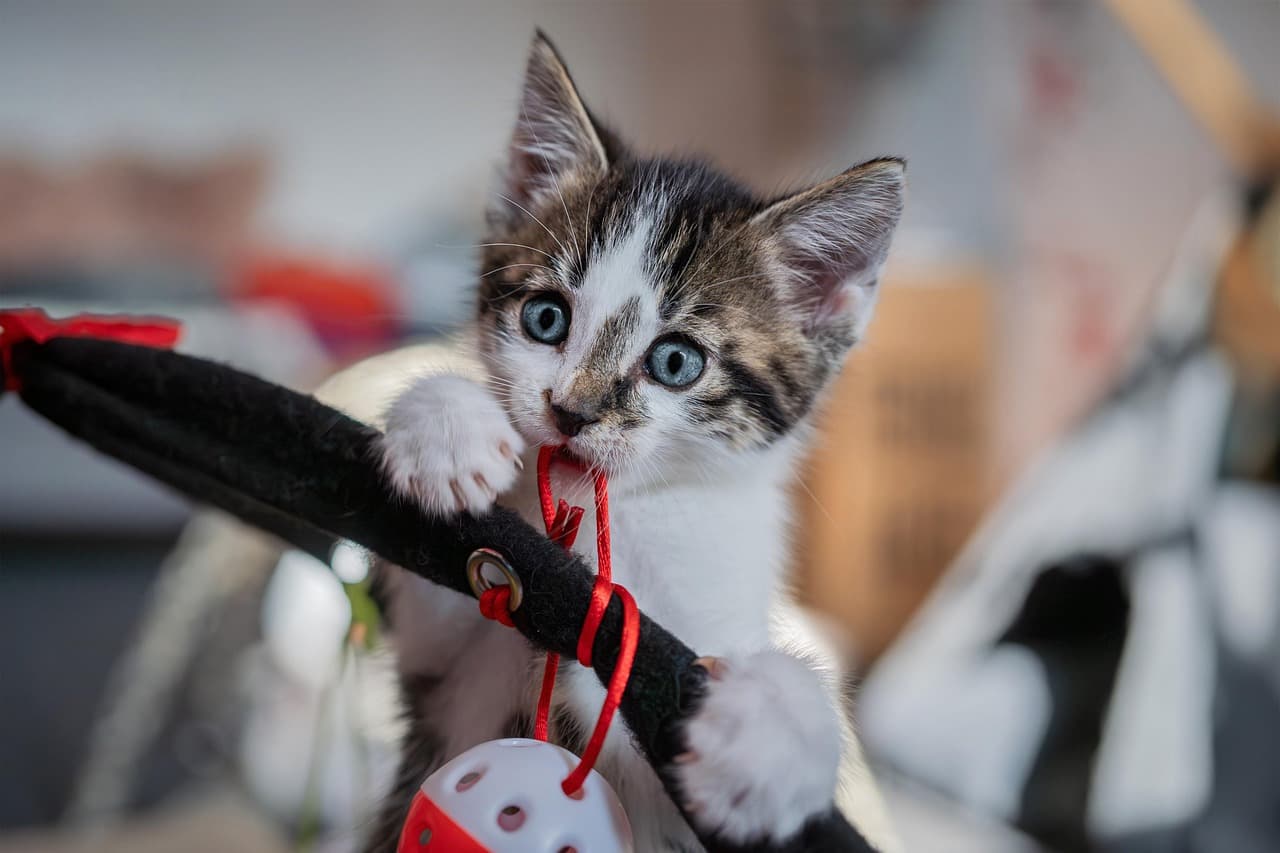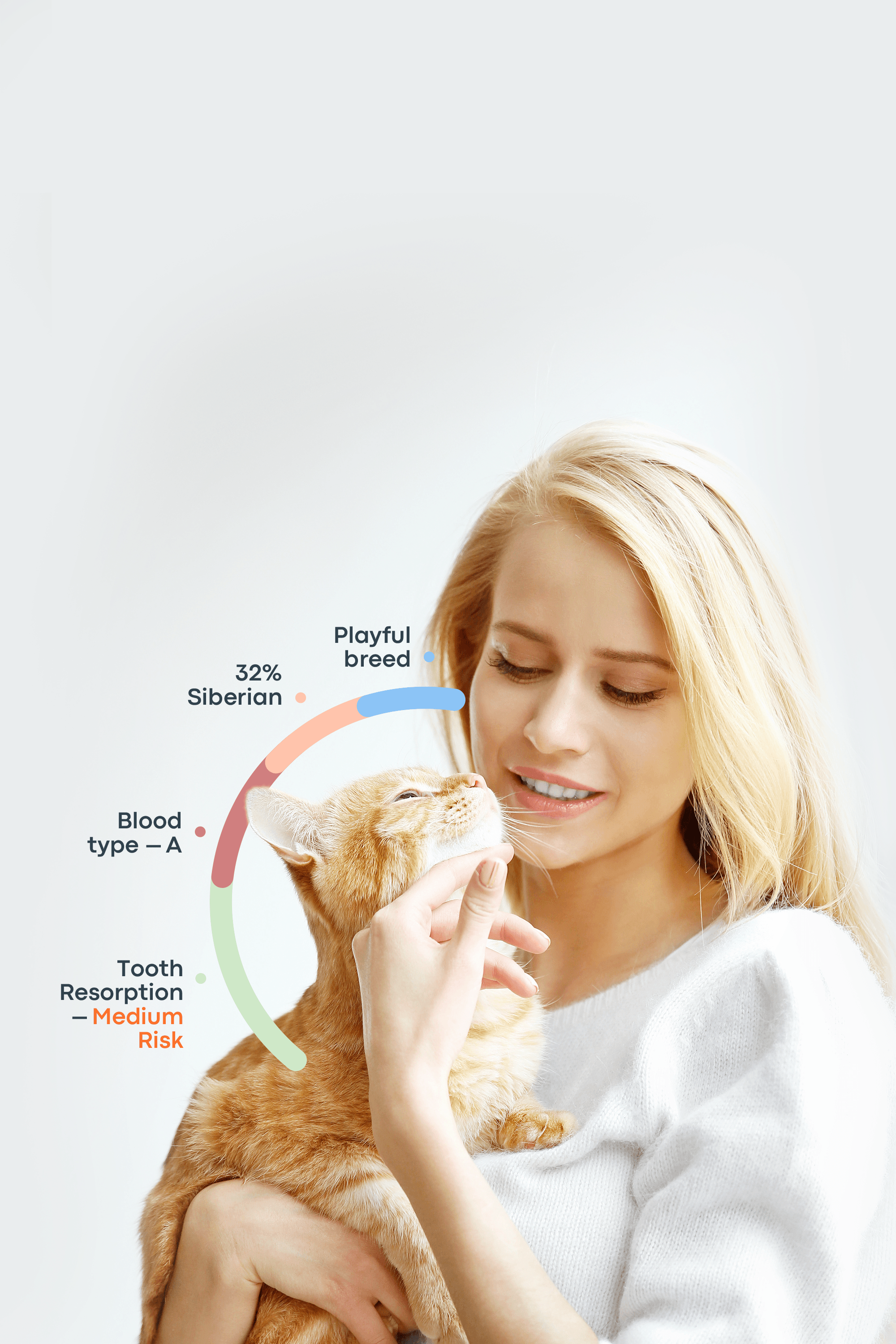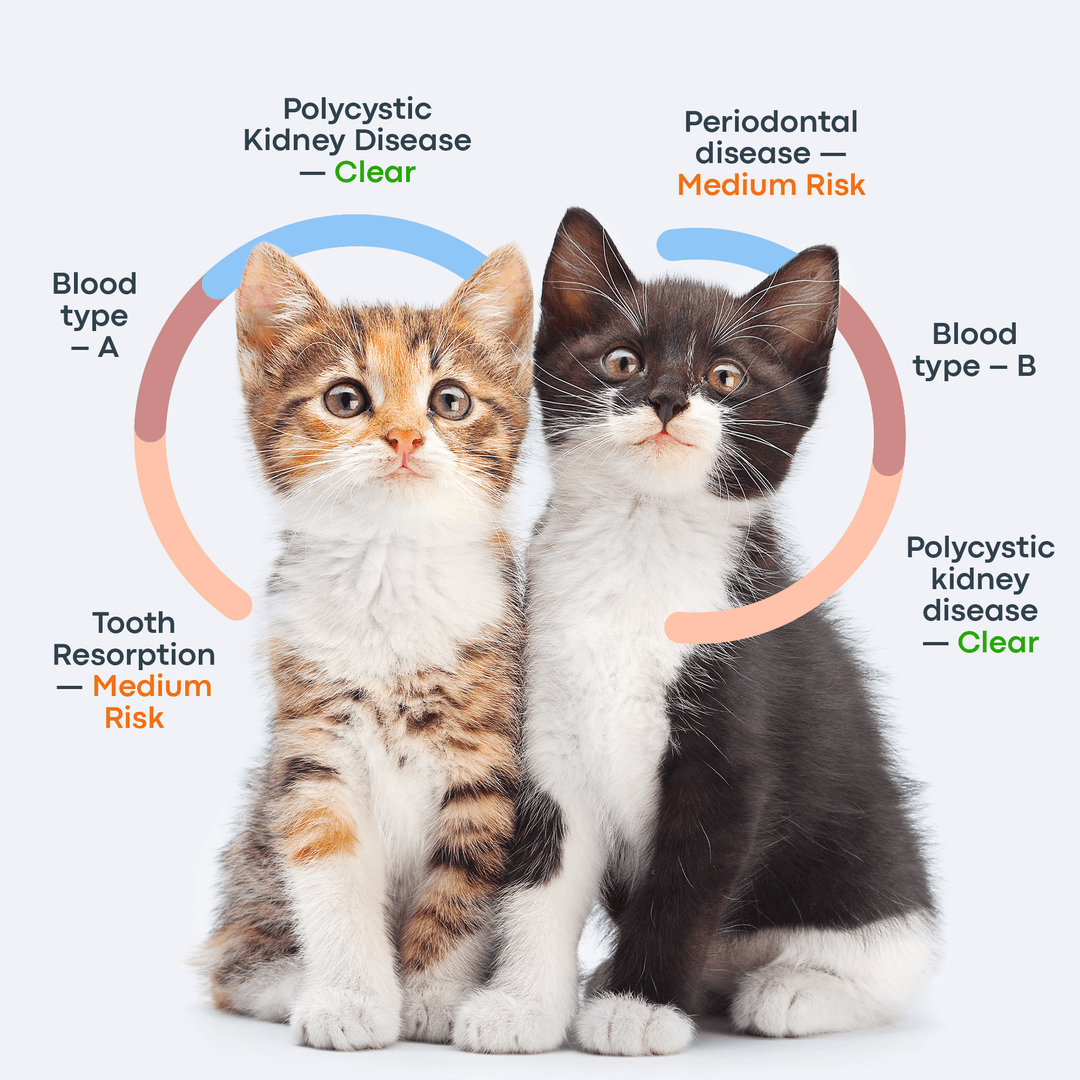So, you’ve brought a cat home, and suddenly they’re squeezing into the tiniest spaces, pawing at bags, hiding in boxes, inspecting your groceries, and following you from room to room just to see what you’re up to. Sound familiar? Cats are natural-born explorers. Their curiosity isn’t just adorable—it’s essential to their mental stimulation, physical activity, and social development. Exploring their environment helps them learn, stay sharp, and feel more confident and secure in their surroundings.
Why Are Cats So Nosy?

Genetics and Natural Instincts
Dual role in the food chain
Cats are mesopredators, meaning they occupy the middle of the food chain:
They hunt smaller animals for food.
They can also be prey for larger predators.
This dual role has shaped their evolution, giving cats remarkable anatomical and sensory adaptations to catch food and stay safe from threats.
Evolutionary adaptations in cats
Vibrissae (whiskers)
Superior vision
Superior sense of smell
Vibrissae
One of the most important tools in a cat’s survival kit is their vibrissae, or whiskers. Far more than just facial hair, whiskers are highly sensitive touch receptors that detect the slightest changes in airflow. This allows cats to sense nearby movement, navigate tight spaces, and even “see” in near darkness where their eyes alone may not suffice.
Superior Vision
Cats also have exceptional night vision. Their eyes contain 6–8 times more rod cells than humans, making them far better at detecting motion in low light. A reflective layer behind the retina, called the tapetum lucidum, amplifies available light, allowing cats to make the most of even the faintest glimmer—perfect for nocturnal hunting.
Superior Sense of Smell
A cat’s sense of smell is estimated to be up to 14 times stronger than ours, enabling them to detect food, other animals, and subtle environmental changes. Their finely tuned ears can rotate independently to pick up high-frequency sounds from all directions, helping them notice even the smallest details—signals of either danger or dinner.
Curiosity and Survival Link
So, how does all this tie into curiosity? For cats, curiosity is more than a cute trait—it’s a survival strategy. Every scent, sound, or flicker of movement could mean the difference between catching prey or avoiding a predator. Missing even the tiniest clue could be costly. In this sense, your cat’s endless nosiness is not just adorable—it’s an ancient instinct that has helped their species thrive for thousands of years.
Territorial Nature
Cats are naturally territorial animals, a trait deeply rooted in their wild ancestry. In the wild, establishing and defending territory is essential for survival—it helps secure access to food, mates, and shelter. Domestic cats retain this instinct, even though their environment is much safer.
They mark their territory through several behaviors, including sniffing, patrolling, rubbing, scratching, and sometimes urine marking. Each action serves as a form of communication, sending a clear message: “This space belongs to me.”
Even indoor cats express this instinct. When your cat sniffs your shoes, rubs against shopping bags, or inspects new furniture, they’re not just curious — they’re gathering information and reinforcing their sense of ownership. With scent glands located on their cheeks, paws, and the base of their tail, cats leave behind subtle chemical “signatures” that help them feel secure and in control.
Territorial behavior also explains why some cats guard favorite resting spots or chase other pets away. It’s not aggression for its own sake—it’s a natural way of maintaining boundaries and ensuring their environment feels safe and predictable. Understanding this helps owners interpret feline behavior more accurately and create a calm, reassuring home for their pets.

Hunting Instincts
In the wild, cats rely on hunting to survive, using their sharp senses, stealth, and patience to catch prey. While domesticated cats no longer need to hunt for food, the instinct remains strong. This is why your cat may stalk moving shadows, chase toys, or curiously peer into every nook and cranny of your home.
Their behavior isn’t driven by hunger but by deeply ingrained predatory instincts. Exploring hidden corners and watching small movements helps them stay mentally sharp and ready—just as their ancestors needed to be to catch prey. Even well-fed cats may “practice” hunting by pouncing on insects, batting at loose strings, or ambushing your feet under a blanket.
Encouraging this natural behavior through interactive play, such as using feather wands or moving toys, helps keep cats physically active, mentally stimulated, and emotionally fulfilled.
Intelligence
Cats are highly intelligent creatures with complex cognitive abilities. One fascinating example of this is their understanding of object permanence—the awareness that objects continue to exist even when they’re out of sight. This concept typically develops in kittens during the sensorimotor stage of their cognitive growth, similar to what happens in human infants.
Because of this ability, cats remember that a toy rolled under the couch or food was hidden in a drawer, which explains why they paw at closed cupboards or stare intently at spaces where they’ve seen something disappear. It’s not random curiosity—it’s problem-solving in action.
Beyond object permanence, cats also demonstrate memory, learning, and reasoning skills. They can recognize patterns, remember feeding times, and even associate sounds or actions with specific outcomes. Some studies suggest cats can recall past experiences for years, particularly those involving comfort, danger, or routine.
Providing mental stimulation—such as puzzle feeders, interactive toys, or short training sessions — helps cats use their intelligence, keeping them engaged and emotionally balanced.
Social Aspects Behind Cat Curiosity

Play: Turn anything into a toy; stimulates mind and body, mimics hunting.
Hideaways: Seek safe spaces to rest or observe; instinctual hiding/ambushing.
Attention: Exploration signals a desire for interaction or bonding.
Hunger: Food-seeking instincts drive curiosity around meals or snacks.
Cats are naturally inquisitive animals, and their curiosity often has a social or emotional dimension. They explore not only to learn about their surroundings but also to interact, play, and connect—both with people and the environment around them. Your cat may be curious for several reasons:
Wanting to Play
Cats love to play and can turn almost anything that catches their eye into a toy. They might swat at strings, dive into boxes, crinkle paper bags, or paw at household items just to see how they move. This play-driven curiosity isn’t just entertainment—it helps them stay mentally sharp, physically active, and emotionally balanced. Play mimics hunting behavior, allowing cats to practice stalking, pouncing, and chasing, all of which are deeply ingrained survival instincts.
Looking for Hideaways
If your cat squeezes into strange spots or vanishes under the bed, it’s likely searching for a cozy hideaway. Cats instinctively seek safe, enclosed spaces where they can rest undisturbed or observe without being seen. These secret spots also serve as strategic hideouts—in the wild, such behavior helps cats stay safe from predators or lie in wait for prey. Even domestic cats retain this instinct, which explains their fascination with closets, boxes, and tight corners.
Desire for Attention
When your cat climbs onto your keyboard, interrupts your work, or starts exploring everything you’re handling, it’s often seeking attention rather than misbehaving. Cats are social in their own way, and curiosity can be their method of initiating interaction. They might want to play, be petted, or simply share your company. Responding positively to these moments—with gentle play or affection—strengthens your bond and reassures your cat that it’s valued and secure.
Being Hungry
Sometimes, what seems like pure curiosity is actually hunger or food-seeking behavior. Cats sniff grocery bags, inspect your plate, or poke around the kitchen, driven by the same instincts their ancestors used to survive. In the wild, cats didn’t wait until they were starving to hunt; they stayed alert, exploring anything that might be edible. That instinct persists today—so your cat’s “nosiness” at mealtime isn’t mischief, but a natural drive to seek out food opportunities.
Why Are Kittens So Curious?

Kittens are naturally curious—even more so than adult cats—because curiosity plays a vital role in their early development. During their critical learning window between 2 and 9 weeks of age, a kitten’s brain is rapidly forming connections that help them understand the world. Every new sight, sound, and scent teaches them what’s safe, what’s fun, and what might be dangerous.
Exploration is how kittens learn. They nibble on objects, chase moving things, climb, and sniff their surroundings with wide-eyed fascination. This playful investigation builds confidence, sharpens their coordination, and helps fine-tune their senses of sight, smell, and hearing. Play also strengthens social bonds—both with littermates and with humans—and teaches important life skills like hunting, stalking, and pouncing.
As cats grow older, their curiosity doesn’t disappear; it simply becomes more measured. Adult cats are more likely to observe before acting, preferring to assess new situations carefully rather than diving in headfirst. Still, that spark of kitten-like wonder never truly fades.
Curiosity in kittenhood isn’t just adorable—it’s essential for healthy growth, brain development, and emotional well-being. Encouraging safe exploration and interactive play during this stage helps raise confident, well-adjusted adult cats.
Cat Curiosity: Common Behaviors and Their Meanings
Curious Behavior | What It Means | Instinct or Need Linked To |
Sniffing shopping bags or new items | Assessing new scents to check for potential threats, food, or territory changes. | Territorial awareness, survival instinct |
Climbing into boxes or bags | Seeking safety, comfort, or a secure hiding spot; may also be preparing to stalk or ambush. | Protection and hunting instincts |
Following you from room to room | Wanting to stay close, interact, or keep track of your activities. | Social bonding, attention-seeking, environmental monitoring |
Pawing at closed drawers or doors | Demonstrating object permanence — knowing something exists even when hidden. | Intelligence, memory, problem-solving |
Jumping on counters or tables | Exploring high vantage points or searching for food and interesting scents. | Hunger drive, curiosity, exploration |
Knocking objects off shelves | Testing how objects move or sound; often a playful form of experimentation. | Play instinct, hunting practice |
Watching birds through windows | Engaging in simulated hunting and visual stimulation. | Prey drive, mental enrichment |
Sitting on your book or laptop | Seeking attention, warmth, or involvement in what you’re doing. | Social bonding, comfort-seeking |
Exploring closets or tight spaces | Looking for a quiet, secure hideaway to rest or observe. | Protection, security, evolutionary survival instinct |
Encouraging Healthy Curiosity
Curiosity is a vital part of a cat’s well-being. It fuels their physical activity, mental stimulation, and social interaction, keeping them happy, alert, and emotionally balanced. Providing your cat with safe opportunities to play and explore helps channel this natural curiosity in healthy, positive ways. Here are some effective ways to do that:
Interactive Toys
Interactive toys are excellent for satisfying your cat’s curiosity while promoting exercise and mental engagement. Choose toys that mimic the movements or sounds of prey—such as feather wands, motorized mice, or balls that rattle. These toys tap into your cat’s natural hunting instincts, allowing them to stalk, chase, and pounce safely indoors. Rotating toys regularly also prevents boredom and keeps playtime fresh and exciting.
Environmental Enrichment
According to PetMD, environmental enrichment helps prevent boredom-related stress behaviors like excessive grooming, overeating, or destructive scratching. Creating an engaging environment doesn’t have to be complicated—offer puzzle feeders, scratching posts, safe climbing shelves, or window perches where your cat can watch the world outside. You can also introduce new textures, sounds, or scents from time to time to keep their environment stimulating. These small changes make daily life more interesting and satisfying for your cat.
Training and Socialization
Cat training and socialization are powerful tools for boosting your pet’s confidence and curiosity. Using clicker training, you can teach simple commands like “sit,” “high five,” or “fetch.” This mental workout strengthens your bond and gives your cat a sense of accomplishment. Socializing your cat—by gently exposing them to new people, environments, and other pets—helps them become more adaptable and less fearful of change.
When combined with enrichment and interactive play, training and social experiences give your cat healthy outlets for their natural instincts, ensuring a balanced, curious, and content companion.
Conclusion
Curiosity didn’t kill the cat—it helped them survive and thrive. Cats are naturally inquisitive creatures who love exploring and analyzing their surroundings. Their curiosity is rooted in evolution, serving as a tool for learning, survival, and social connection.
By understanding the science behind feline curiosity, you can create an enriched environment that keeps your cat mentally stimulated, physically active, and emotionally content. Provide plenty of opportunities to play, climb, explore, and observe—your cat’s natural curiosity will flourish, and so will their overall well-being.
Frequently Asked Questions
Why are cats so curious?
Cats inherit their curiosity from their wild ancestors, who relied on exploration to hunt, find shelter, and stay safe. Their curiosity is fueled by instincts related to hunting, territorial awareness, and problem-solving. In domestic cats, this same drive can also show up as a desire for play, attention, or simply exploring something new.
Is a curious cat safe?
Yes — curiosity is a healthy and natural instinct. It helps cats adapt to unfamiliar environments, recognize potential threats, and learn what’s safe. However, it’s important to ensure your home is cat-proofed—remove toxic plants, cover open windows, and keep hazardous items out of reach to let your cat explore safely.
Why are cats so nosy?
Cats aren’t being rude—they’re being instinctive. Their natural curiosity makes them investigate anything new or interesting in their environment. This behavior helps them assess safety, detect prey-like movements, and stay mentally stimulated.
Why do cats like boxes?
According to PetMD, cats love boxes because they offer safety, warmth, and comfort. Enclosed spaces mimic the secure dens their ancestors used for resting and hiding. Boxes also serve as cozy retreats where cats can relax, observe without being seen, or plan playful ambushes—all part of their natural behavior.
Reference List
https://www.pawschicago.org/news-resources/all-about-cats/kitty-basics/cat-senses
https://www.four-paws.org/our-stories/publications-guides/territorial-behaviour-of-cats
https://journals.plos.org/plosone/article?id=10.1371/journal.pone.0312225
https://www.smalldoorvet.com/learning-center/puppies-kittens/creating-positive-kitten-behaviors
https://www.petmd.com/cat/general-health/tips-for-keeping-your-cat-exercised-and-mentally-stimulated








